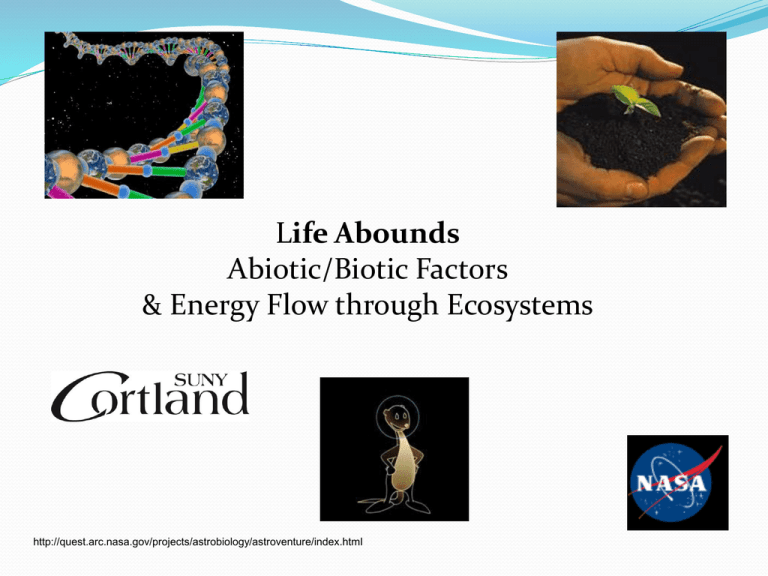Changing Gears—Abiotic vs. Biotic Factors
advertisement

Life Abounds Abiotic/Biotic Factors & Energy Flow through Ecosystems http://quest.arc.nasa.gov/projects/astrobiology/astroventure/index.html Today’s Objectives By the end of class today, you will be able to: distinguish the difference between biotic and abiotic factors and the role they play in environmental communities to identify the 4 mains parts of energy flow through an ecosystem Changing Gears—Abiotic vs. Biotic Factors Abiotic Factors The growth and survival of organisms depends on the physical conditions and chemical factors in the environment on which life depends—they themselves are not living. Clipart Changing Gears—Abiotic vs. Biotic Factors Biotic Factors Includes all the living components of the environment that affects the ecological community either directly or indirectly, and helps to limit the species that inhabit that area Clipart Abiotic Factors Light intensity for photosynthesis Temperature range Amount of moisture available Types of rock under the soil Mineral availability Presence of atmospheric gases pH of the system Abiotic Factors Subject to the physical laws of nature Sunlight—affected by filtering of the atmosphere protecting us from harmful radiation Water—expands and becomes less dense when freezes Biotic Factors Population levels of a particular species Food requirements for a particular species Interactions one species has with another Waste produced by the species Biotic Factors Abide by natural biological laws that govern ALL life forms All living things composed of cells (organism’s functional unit) Living things MUST carry out their life functions to survive Living things depend on the activities of other living things to provide them with nutrients and essential components.











